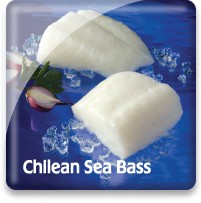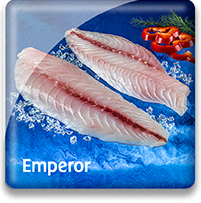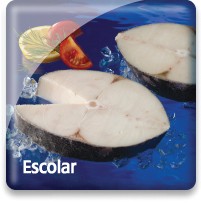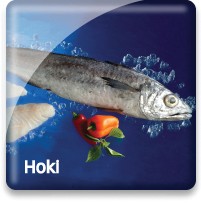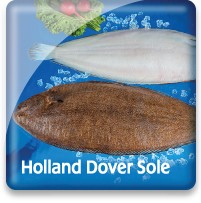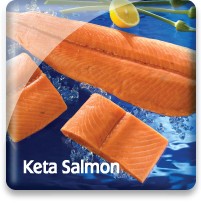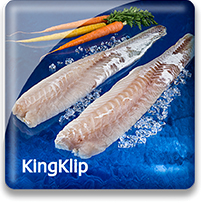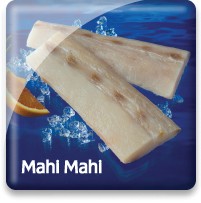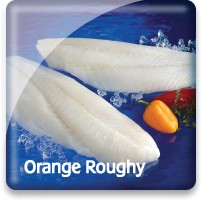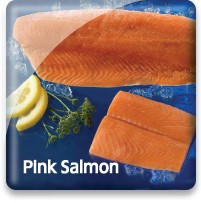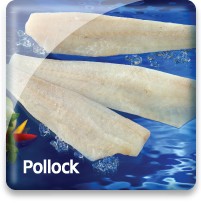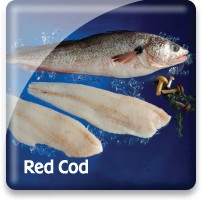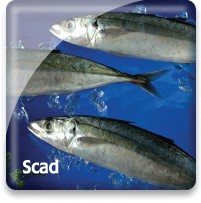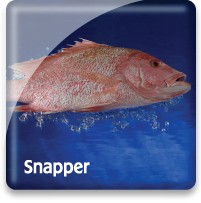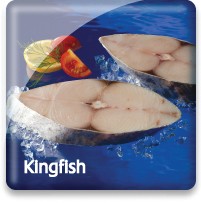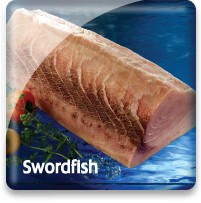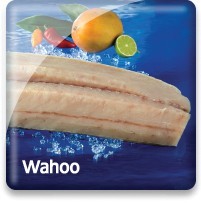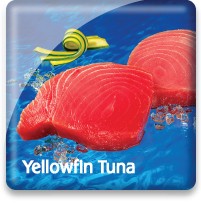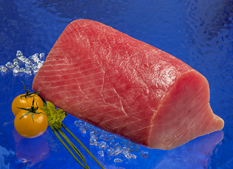
Yellowfin Tuna

Market Name: Eating QualitiesYellowfin tuna is mild and full of flavor with a firm texture.
   |
Description & CharacteristicsYellowfin tuna, Thunnus albacares, is the world’s most valuable tuna catch. The species is found in tropical and sub-tropical waters, with the exception of the Mediterranean Sea, where they are notably absent. They are typically caught by multi-international large vessels at the surface by purse seine and in deeper waters by longline. Sea Port concentrates on sourcing from the roughly 10-15% of the catch done by artisanal fishers that use pole & line and handline which have very minimal impacts to the ocean's structural habitats and non-targeted bycatch species.Yellowfin is a major component of canned light meat for U.S. consumption. Tuna caught by purse seine are generally used for canning. When caught by longline or artisanal methods the fish is customarily sold as fresh or frozen product. A distinctive fish, yellowfin are large with wide middle bodies that taper at each end, the deepest part of the body is under the first dorsal fin. They have two dorsal fins topside, and have small eyes and small teeth. Their color is a dark metallic-like blue or green, and their belly and lower side are a silvery white. One of the yellowfin tuna’s most distinct features is the golden stripe that runs along the side of the fish. Fish as large as 400 pounds have been caught, but yellowfin typically range between 20 and 120 pounds.Known as ahi in Hawaii, yellowfin fillets and steaks have developed quite a following across the U.S. Tuna is graded for sale, with sashimi as the number one grade indicating a good color and high fat content. “Two plus” and “twos” are also popular grades and refer to fish that have decreasing color quality and fat content, respectively. In its natural state, yellowfin tuna flesh is brown in color once caught, cut and prepared for distribution. In Europe, where it is forbidden to use treatments to color food like tuna, the tuna fish available for sale in fish shops and grocery stores will look brown. By contrast, in the U.S., where food coloring by CO treatment is allowed, the tuna is colored red. The majority of Yellowfin sold in the U.S. has been treated by this CO (carbon monoxide) treatment. In Japan, a great deal of tuna is eaten raw. In the U.S., Japanese cuisine like sashimi and sushi has become increasingly popular. When cooked well done, the meat turns an off-white color. It is mild, flavorful and firm.
Yellowfin tuna is named for the small yellow tips on its fins.
Other Resources |
Handling Instructions for Yellowfin Tuna
Our frozen Yellowfin tuna loins and portions should be stored at or below 0°F (-18°C) and then thawed properly when ready to cook. It is best to consume within 18-24 months of the processed freeze date. Links to further information concerning the proper handling of seafood: NOAA - Fish Watch: Handling Seafood and A Consumer Guide to Safe Seafood Handling.
Thawing Yellowfin Tuna
Thawing is accomplished by removing the Yellowfin tuna loins and portions from their original packaging and placing them in a sealed plastic container or bag and placing in the refrigerator (33 to 39°F) for 12-24 hours or longer for the larger sized loins. This is our recommended thawing method for tuna. Tuna that is not consumed promptly after thawing needs to be refrigerated between 33 and 39°F and totally consumed in 2-3 days.
Important Instructions for Yellowfin Tuna
Consuming the Yellowfin tuna immediately after proper thawing yields the best quality.
The Federal Food, Drug and Cosmetic Act now requires that all foods that are not raw agricultural commodities and that contain a major food allergen be labeled to clearly identify the name of the food source form which the allergen is derived. (21 CFR U.S.C. 343(w)(1)). The act defines eight foods, and any ingredients derived from these foods as major food allergens: Fish, Crustacean Shellfish, Milk, Eggs, Tree Nuts, Peanuts, Wheat & Soybeans. The name of the food source that must be listed on the label for fish or crustacean shellfish must be the specific type of fish or crustacean shellfish. The market names of species of fish and crustacean shellfish should be used to identify the food source of these two major food allergens. If you intend to re-pack these seafood products, be sure the allergen is declared in either one of two ways:
1) Within the list of ingredients
or
2) In a separate “Contains” statement immediately after or adjacent to the list of ingredients.
Consult the Fish and Fishery Products Hazards and Controls Guidance, Fourth Edition, Chapter 19 for more detailed information on the labeling of food allergens.
Cooking Tips
Yellowfin tuna can be prepared using a wide variety of cooking techniques. Link to Yellowfin tuna cooking tips and recipes.
The Philippines
The Republic of the Philippines is actually an archipelago, or group of islands set in the middle of the Pacific Ocean and the South China Sea. Roughly the size of Italy, this island nation boasts more than 10,849 miles. Its fishery is divided into marine, inland, and aquaculture.
Commercial species include scad, tuna (yellowfin and skipjack), mackerel, anchovies, sardines, squid, and blue crab. Aquaculture originally started in the Philippines with the cultivation of “Milkfish” – which took place in brackish water ponds originally, extending later to net cages floating in both fresh water and marine environments.
Shrimp is another major product of the Philippines, starting with Black Tiger prawns, largely exported to Japan. Shrimp underwent a “boom and bust” cycle, because of disease problems that led to a decline in production.
Today, finfish is becoming a popular aquaculture species, particularly Tilapia, some carp; seaweed, oysters and mussels.
Indonesia
The country we refer to as Indonesia is actually an Archipelago of some 17,508 islands and a coastline that encompasses more than 50,000 miles. Within the waters of the Indonesian archipelago, the government has established an “archipelagic country,” retaining exclusive control over these waters. Because of Indonesia’s access to the marine environment, it has vast potential for the development of aquaculture, particularly brackish water shrimp culture. In fact, in an attempt to prevent over-exploitation of the wild fishery resource, the government of Indonesia has established a formal policy to encourage aquaculture development. Mariculture products include various finfish, shellfish, seaweeds, species such as sea cucumber, grouper and seaweed.
Tuna is also an important export product of Indonesia.
Vietnam
With a coastline of 2,140 miles, as well as numerous rivers and lakes, Vietnam has had a long tradition of fishing and a culinary tradition that includes finfish, shellfish, and molluscan shellfish.
Bordering China in the far North, and Laos and Cambodia in the middle and Southern regions, the country—known officially as the Socialist Republic of Vietnam—is divided into 58 provinces, and includes several major sea ports.
With seafood production surpassing USD $6 billion in 2012, seafood—both cultured and wild—represents an important export for this developing country.
Major seafood exports from Vietnam include cultured and wild shrimp: Black Tiger prawns and Penaeus vannamei are grown in Southeast Vietnam, and small white and pink shrimp are still commercially caught in the South China Sea off the southern coast.
In addition, Vietnam is becoming known for its high-tech seafood processing industry, adding value to commercially harvested and farmed fish and seafood.
Species that are commercially caught include Grouper, Red Snapper, Red Mullet, Tuna, Swordfish, and Barramundi—which are the major species that are exported to Australia, the United States, and the EU. Vietnam is also a major producer of farmed Tilapia, and two species of Pangisius (boucourti and hypothalamus). Squid and octopus, as well as various species of lobster and crab and molluscan shellfish are also major export products as well as products consumed in-country.
Thailand
With more than 1,550 miles of coastline, Thailand—officially, the Kingdom of Thailand—has become one of the world’s leading seafood suppliers. Primary seafood products from Thailand include cultured (farmed) shrimp sold in various value-added forms as well as canned seafood—predominantly tuna.
With a focus on constant improvement of shrimp farming techniques to reduce impacts on the environment, as well as the development of new, value-added products, Thailand has emerged over the years as one of the leaders in this beloved seafood category.
In the tuna category, Thailand is a major global producer of canned tuna, much of it caught by vessels from other countries that bring it, frozen, to Thailand to be canned.
Go Blue! Seafood Sustainability Spectrum*Click here for an explanation of our Sustainability Spectrum 
Sustainability AssessmentYellowfin Tuna is a highly migratory pelagic species that inhabits tropical, subtropical, and warm-temperate oceans worldwide. Yellowfin can grow to more than 400 pounds and more than six feet in length. Heavily targeted throughout their range, most Yellowfin Tuna stocks are either fully exploited or slightly overfished. Sea Port’s Indonesian & Philippine supply of Yellowfin comes from artisanal vessels operating primarily in the Indian Ocean and the Western Pacific that use both pole & line and handline which have minimal negative impacts to ocean habitates and to the bycatch of non-targeted species.Management of yellowfin tuna is complex due to its highly migratory behavior, and involves the cooperation of many different nations through regional fisheries management organizations (RFMOs) as well as national and regional oversight by individual countries. Due to the logistics of managing a resource shared by many countries, most RFMOs have experienced issues with managing and regulating tuna fishing. Illegal fishing and unreported catches are a significant concern in the tuna fisheries. Challenges faced by the Indonesian and Philippine tuna fisheries are poor recording and reporting of catch statistics, bycatch of sea turtles by longline gear, and the capture of juvenile sizes of Yellowfin and bigeye tuna. Though the Philippine data reporting system is more robust, there are still issues with collecting data from fishers; protected, endangered and threatened (PET) species bycatch; and bycatch of juvenile Yellowfin and bigeye tuna. Shark finning is also a concern, particularly among Indonesian fleets. Both countries are pursuing improved research and monitoring of their tuna resources, with the financial and technical assistance of neighboring countries and from the international management bodies that oversee international management of Yellowfin Tuna and other tuna species.
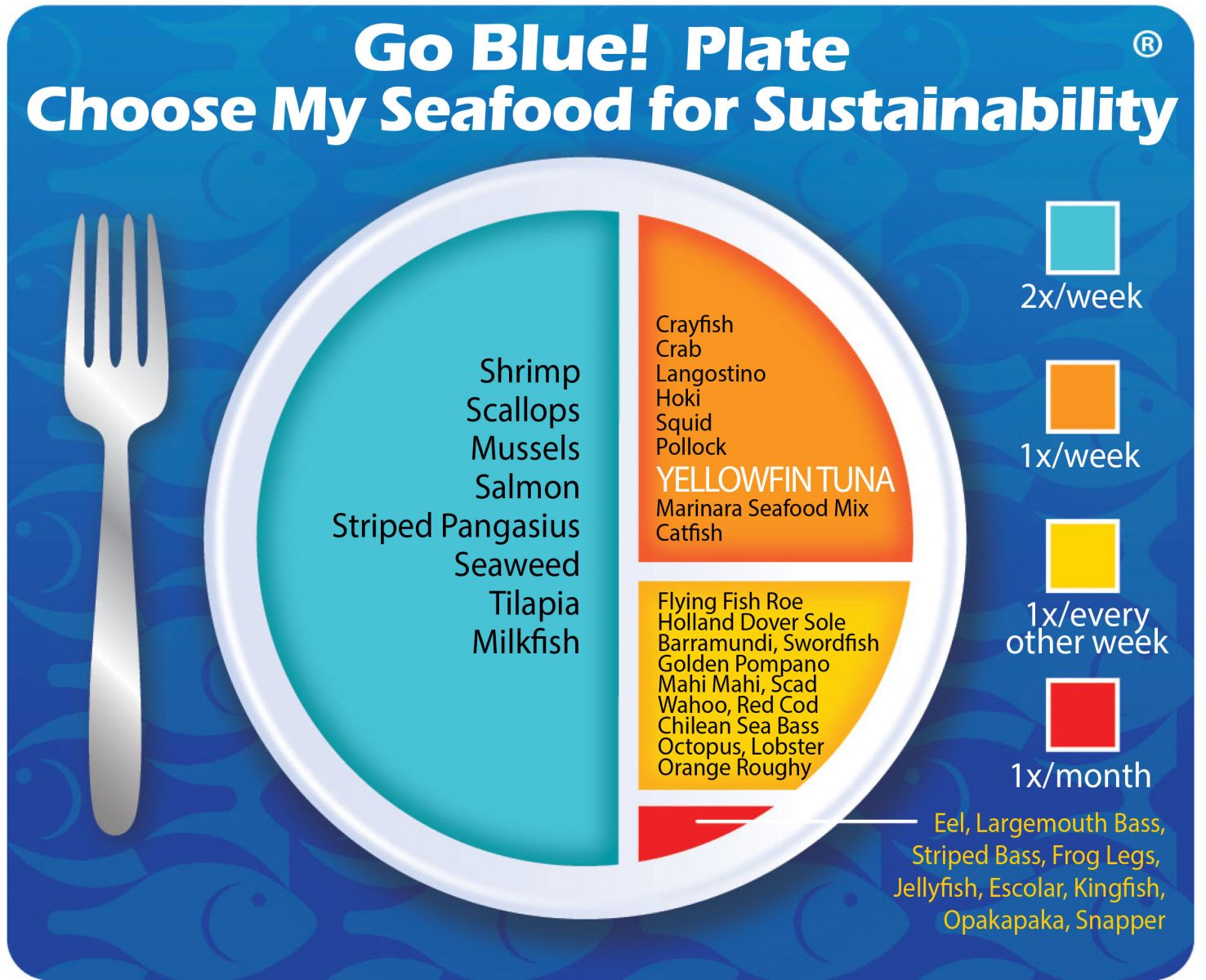
Environmental Impact: ModerateThere is little or no monitoring of landings and bycatch as well as illegal fishing by un-licensed fishing vessels in both the Philippine and Indonesian fisheries. Additionally, overfishing of Yellowfin is occurring in the Indian Ocean.
Sustainability Improvements NeededComprehensive monitoring and data collection is a must. Improved monitoring and data reporting on Indonesian and Philippine high seas and artisanal tuna fleets is needed, as well as the implementation of bycatch mitigation measures with prohibitions on the retention of shark fins that are not attached to the shark.
Actions that Sea Port is UndertakingSea Port must comply with the NOAA Fisheries Service’s Tuna Tracking & Verification Program (TTVP). Sea Port submits a tuna tracking form that lists the harvest method, vessels identification, and FAO fishing area for all Yellowfin Tuna they import. Sea Port primarily sources Yellowfin from fishers that use the less negative impactful pole & line and handline catch methods. Sea Port believes progress is being made to improve the world’s Yellowfin Tuna fisheries to become more sustainable. Sea Port also believes tuna, America’s #2 most popular seafood, should be enjoyed as just a part of a diverse variety of seafood to choose from. Sea Port believes that, in aggregate, choosing from an expanding diverse variety of seafood is better for sustaining the world’s seafood resources. We created the sustainability assessments for each of our seafood items in order to reveal the existing and potential environmental impacts and risks that are associated with producing them for human consumption. This allowed us to establish the starting position for each of our seafood items along our progressive Go Blue! Seafood Sustainability Spectrum®. These assessments are only a single snapshot in time and because of this, we will continue to assess and update the critical sustainability needs associated with our supply sources and issue updates to the Go Blue! Seafood Sustainability Spectrum® as needed. There is a growing global awareness for the need to assure the sustainability of farmed and wild caught seafood and because of this; all around the world positive changes are rapidly occurring at all levels of the seafood supply chain. We will continue to spread this growing awareness and work with our many industry partners to improve the sustainability of all seafood, which we believe is the ideal protein of choice to feed an ever growing world population. Our Go Blue! Seafood Sustainability Spectrum® serves as our compass and yardstick as we strive to move all our products forward to becoming more sustainable. Please join us in this committed quest and Catch Our Wave® to sustainability by choosing a diverse variety of responsibly produced seafood as part of your diet.
|


